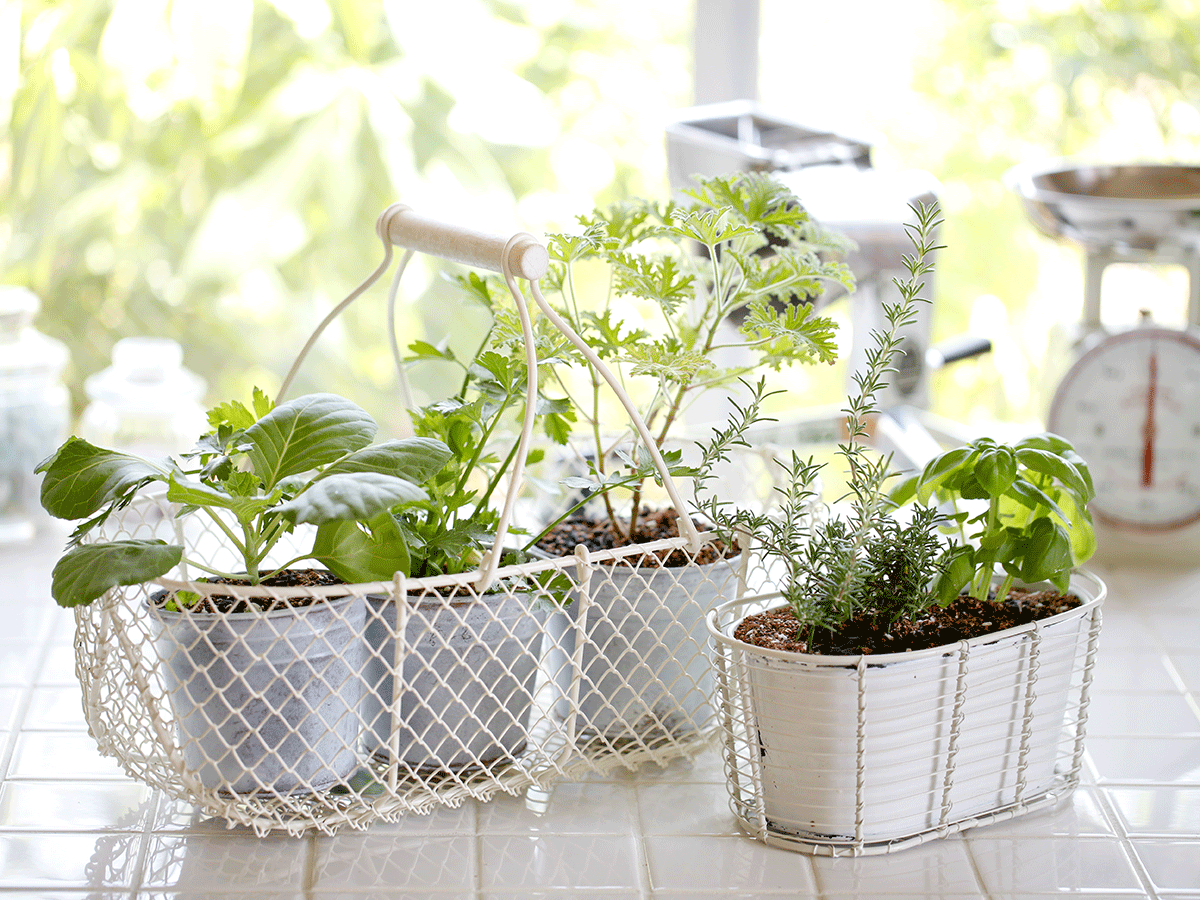
Growing your own herbs and veggies
It was my third time visiting various grocery stores that week, and the situation was looking grim. The shelves were distressingly bare. I was aware that with each jaunt outside my Phoenix patio home in search of ingredients, I was increasing my risk for contracting Covid-19—even though I already knew how to safely shop for groceries.
Still, I would be willing to take my chances if I knew the items I was desperately searching for would be available. Never mind the lack of toilet paper or eggs, both of which seemed non-existent. I was after vegetables—you know, the leafy greens, juicy tomatoes and cruciferous crunchers that are packed with the immune-boosting nutrients we all need right now?
Grocery stores are impressively working around the clock to stock inventory and create the safest shopping environment possible. But, I began to feel anxious about my complete reliance on their efforts to put food on my table.
After arriving back home with a dismal display of wilted kale and an errant bag of shredded cabbage, I miraculously found discarded in the dairy section, something occurred to me. We have no idea how long this global pandemic will persist. Nor do we know how much worse our food scarcity issues could get.
The answer was clear: It was time to take control and start growing my own vegetables. But, there were two immediate problems. First, my black thumb is so severe, that I’ve accidentally murdered more than my fair share of cacti, which can pretty much survive anything except my home. Second, I don’t have a backyard and my front yard is off-limits thanks to strict HOA rules. So, I began exploring my options in search of ways to successfully pull this off.
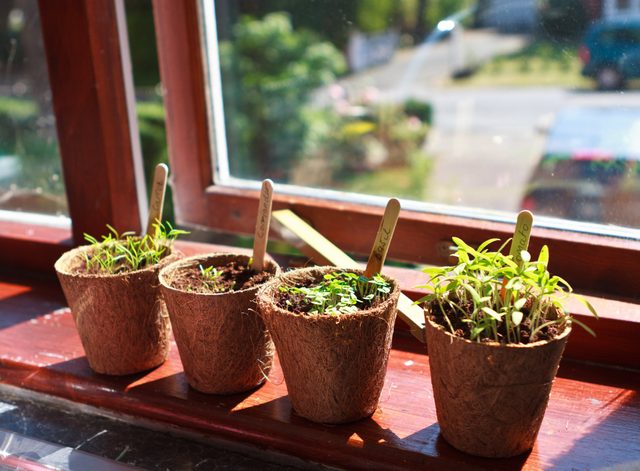
Seedlings in containers
The first option I explored was growing vegetables in individual containers on my patio, either by planting seeds or buying young plants.
I found out from Angelica Elliott, assistant director of public horticulture at Desert Botanical Garden in Phoenix that most herbs, such as rosemary, thyme, oregano, basil, parsley, chives, and dill, will grow well in containers. Your best bets for vegetables include tomatoes, eggplant, peppers, lettuce, arugula, radishes, carrots, and cucumbers—several of these are considered nine of the healthiest vegetables you can eat.
“The supplies you will need are plants and/or seeds, a container—the larger the better, and they should all have a drainage hole at the bottom—potting soil mix, compost, and a little bit of perlite or pumice for increased drainage,” says Elliott. “Before you plant, I would mix the potting soil and compost together at a 1:1 ratio. Then to that mix, add perlite or pumice. Once it is mixed in thoroughly, you can then plant your seed or plants.”
You don’t want to plant too deeply, so just lightly press seeds in to have contact with the soil. Seedlings should not be fertilized right away, because the fertilizer can damage or burn the delicate seedlings. Elliott recommends waiting until the seedlings are at least eight to 12 inches tall before fertilizing and then doing so once or twice a month.
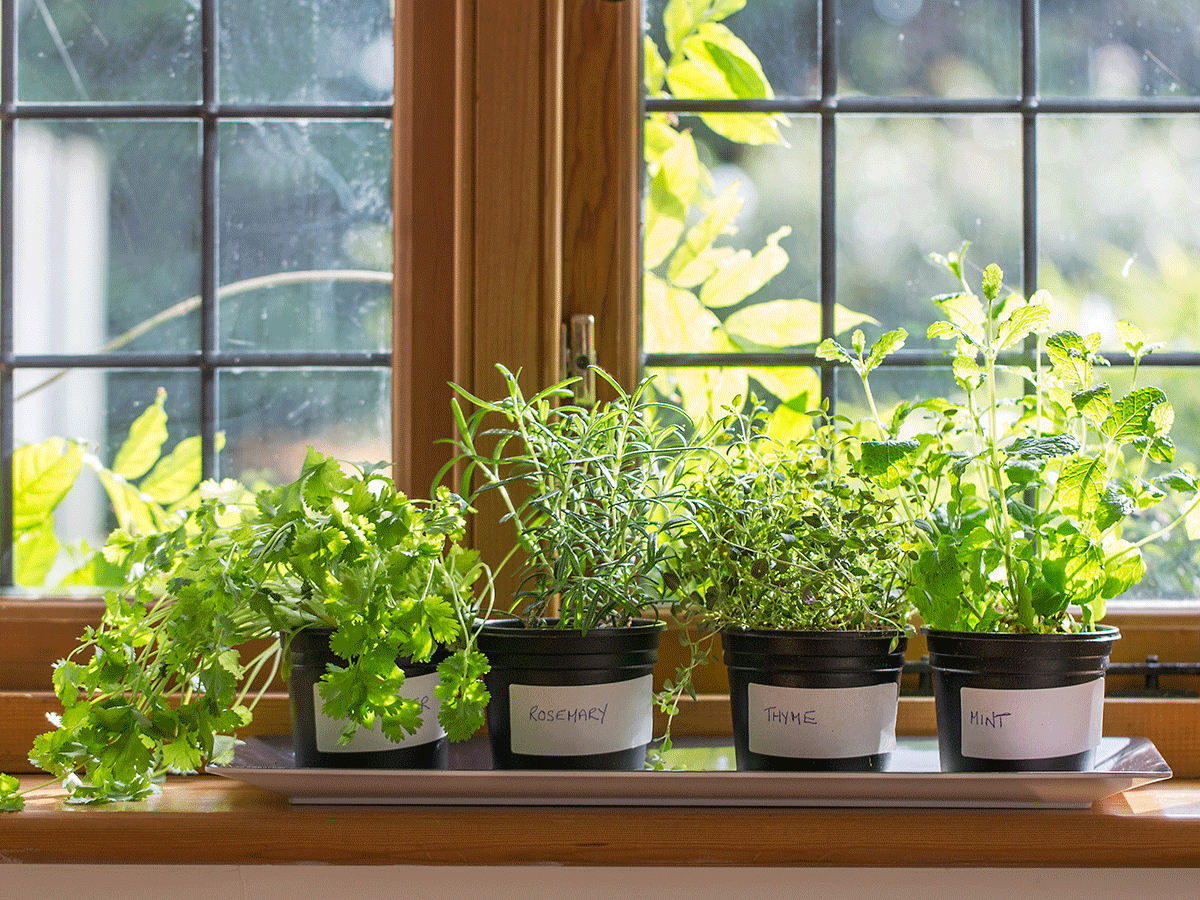
Choose a sunny spot—or invest in grow lights
“Select an area that receives six-to-eight hours of sunlight daily,” says Elliott. “There are some herbs and vegetables that can grow in low light conditions, such as arugula, beets, broccoli, lettuce, leeks, spinach, peas, and Brussel sprouts. But most prefer a sunny location.”
If growing these plants indoors, you’ll need to set up grow lights. Placing them near a window is usually not sufficient sunlight for them to grow properly. Keep the soil slightly moist at all times and most vegetables will be ready for harvest in 50 to 70 days if grown from seed. Most vegetables can be harvested over and over again during their growing season.
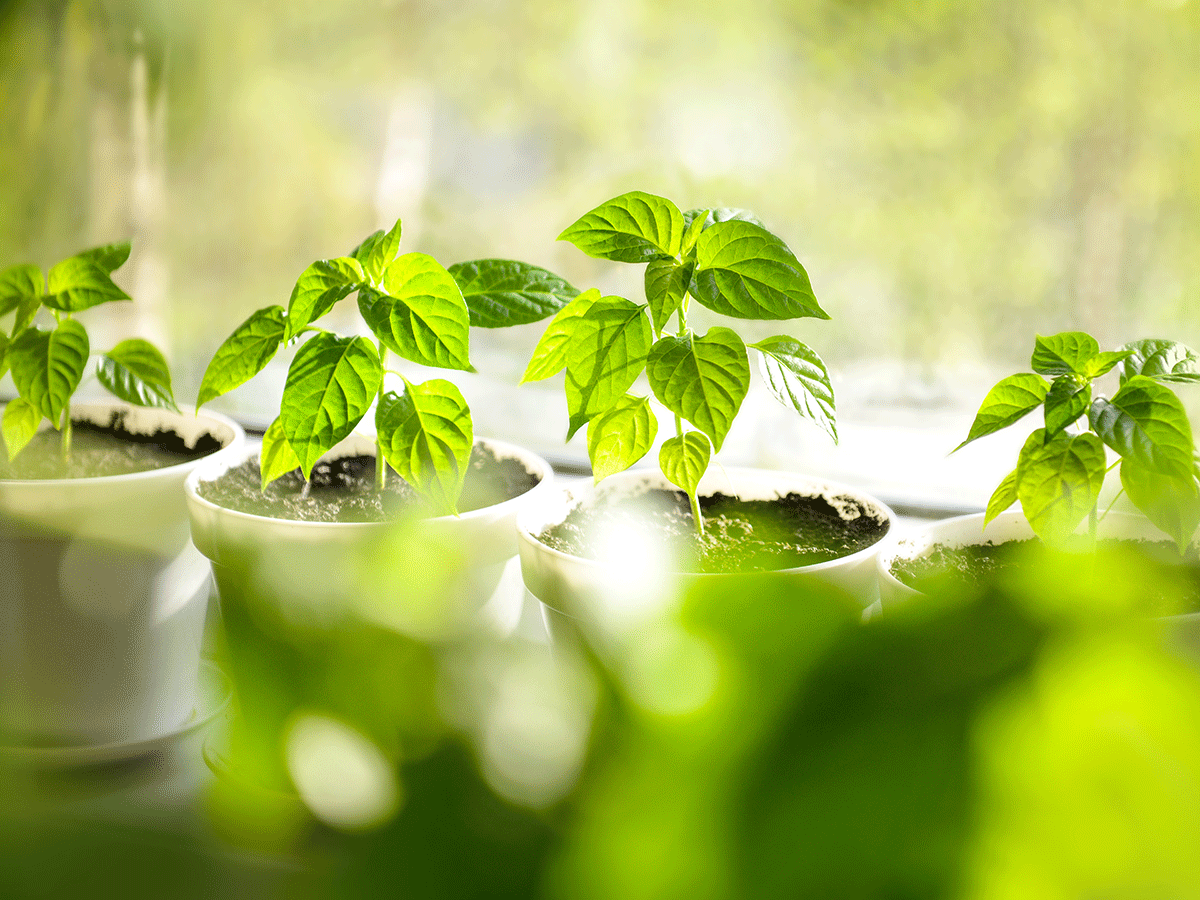
Plug-and-grow options
Based on my history of killing plants, I wasn’t convinced growing veggies in soil-filled containers was going to yield the results I needed. Next, I explored a plug-and-play option called Aerogarden, a self-containing unit with lights and a digital display that automatically reminds you when it’s time to add water and plant food. This is exactly the “set it and forget it” solution I needed.
It works through advanced hydroponics—a soil-free method of growing plants using mineral nutrient solutions in a water solvent. The brand offers nine models, depending on the quantity and type of plants you anticipate growing. I chose a mid-level model that grows six plants at a time, the Harvest Elite, but wouldn’t take up too much precious counter space in my kitchen. It came with a six-pod starter kit (two types of basil, mint, parsley, dill, and thyme), liquid plant food nutrients, and a power adapter. The 20w LED grow light system is built right in, and the height is adjustable to allow room for your herbs to grow. I simply plugged it in, added water and food, placed each pod in a slot, and left it alone.
Within a few days, some of the herbs began sprouting. After about two weeks, my basil was ready to start harvesting as needed (just pinch off a top portion), and soon the others followed. It’s been a little over a month now, and I can’t believe the bounty this little garden produces. Sprinkling fresh herbs into my recipes has been a flavor game-changer and my kitchen smells so fragrant. AeroGarden also sells pods containing seeds for greens, eggplant, peppers, cherry tomatoes, and more. I’ll be ordering those once these herbs no longer produce. For now, I harvest what I need each day and they keep happily growing back.
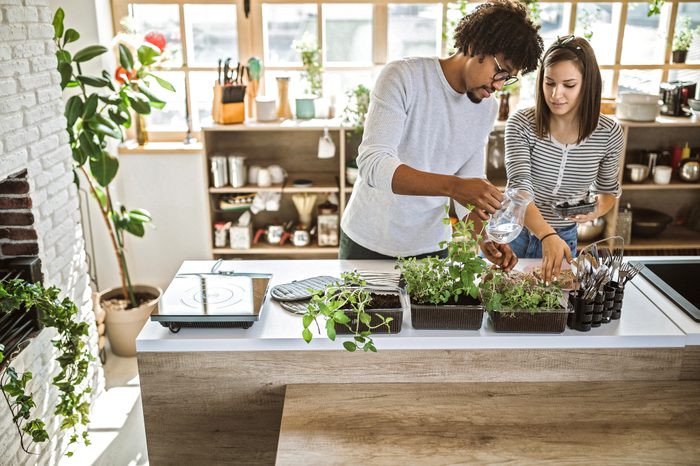
Growing vegetables
Now that I had my herbs happily growing indoors, it was time to focus on actual vegetables. I have a small back patio with access to electricity and began searching for an easy option that would fit the space. I quickly landed on Lettuce Grow’s Farmstand, a self-watering, self-fertilizing, hydroponic tower made in the United States using BPA-free food-grade ocean-bound plastic recovered from coastal communities lacking recycling facilities. Aside from the eco-friendly materials, the Farmstand uses approximately 95 percent less water than soil-based growing and less electricity than a light bulb.
All you need is nine square feet of level space—either in an outdoor spot that gets at least six hours of direct sunlight per day or indoors supplemented with grow lights—and a power outlet for water recirculation. No matter which size you purchase, the modular design takes just a few minutes to assemble, no tools required.
The plants—over 200 greens, veggies, fruits, and herbs are available, depending on the season—are raised to seedlings on the company’s farm before they’re shipped to you to raise. This means your first harvest will take place in just a few weeks. I spend about 10 minutes a week adding water and nutrients and adjusting the pH balance of the water. There’s even an iOS app offering support and guidance.
I effortlessly grew kale, bok choy, arugula, curly endive, butter lettuce, green onion, spinach, iceberg, and red butter lettuce from my first batch. I’m currently growing tomatoes, cucumbers and bell peppers, and can’t wait to add these to my green salads.
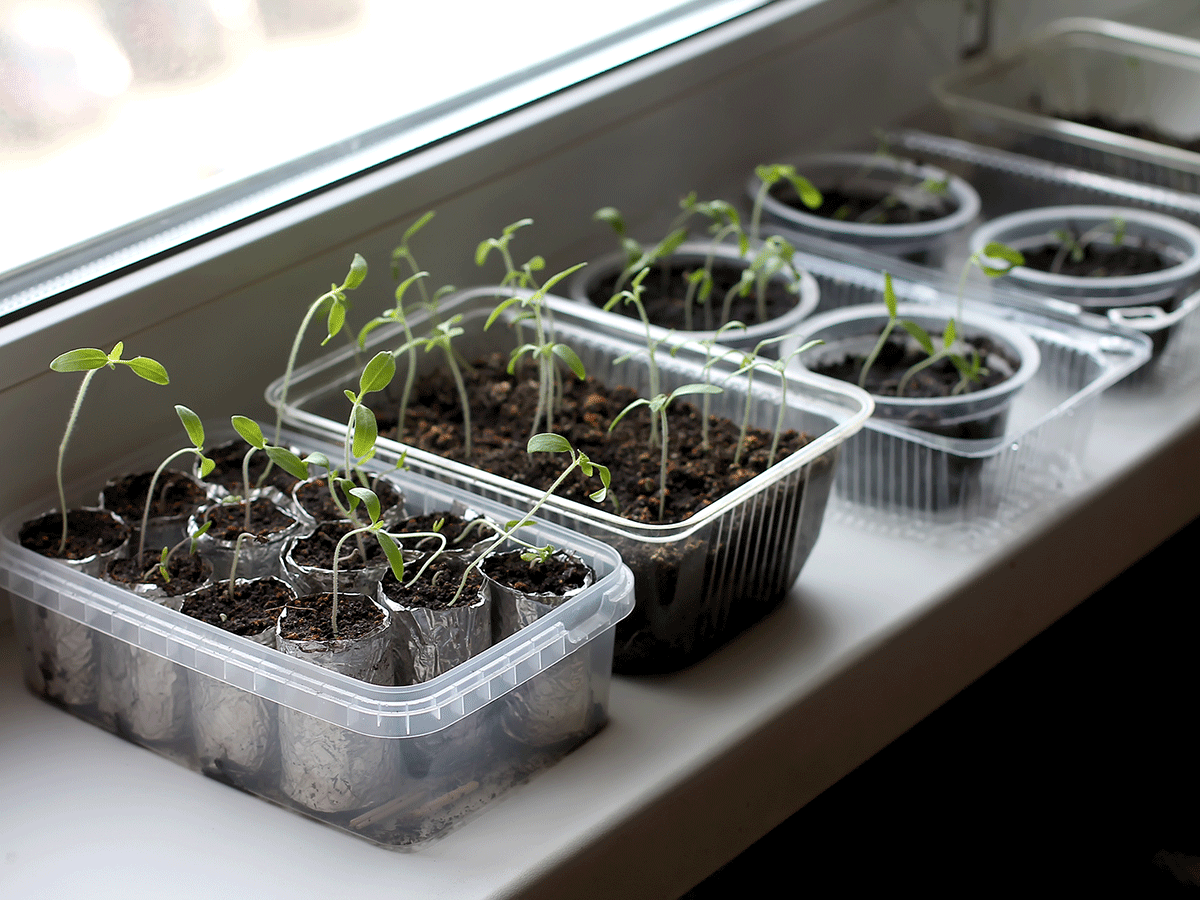
Growing fresh food year-round
If you live in an area limited by weather or space, Miracle-Gro Twelve offers an indoor hydroponic system that promises to make every season growing season. You can grow up to four plants at a time in this unit—which looks like a piece of furniture—choosing from a limited selection of leafy greens, herbs, and select flowers. The corresponding app allows you to monitor water levels, control the light, and set a growing schedule. According to the website, your total energy consumption will cost approximately $4 per month for the system. Due to the design of this system, which places your produce near the floor, it may not be suitable for households with pets or young children. My 10-pound schnauzer Lily, who has the appetite of a goat, would have happily grazed on all the crops before I ever had a taste so I decided not to pursue this option.
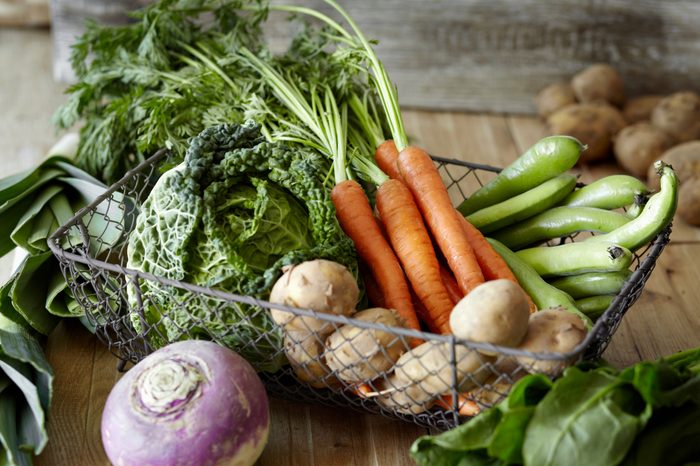
Greater control over your food supply
Now that I have some experience under my belt, it’s dawned on me that there are more benefits to controlling your own food source than simply fewer trips to the grocery store. This means I’ll be continuing to grow herbs and veggies long after our shelter-in-place orders end. “There is less worry about food safety—wondering where it came from and what was sprayed on it—because you decide what you use from the potting soil to the fertilizer and any insect/disease control products from planting to harvest,” says Amy Enfield, a horticulturist with Bonnie Plants, an online company that grows more than 250 varieties of non-GMO vegetable and herb plants for gardeners across the country. Plus, knowing that strangers didn’t handle your produce can bring peace of mind during this pandemic. (You can also freeze these fresh foods—here’s how.)
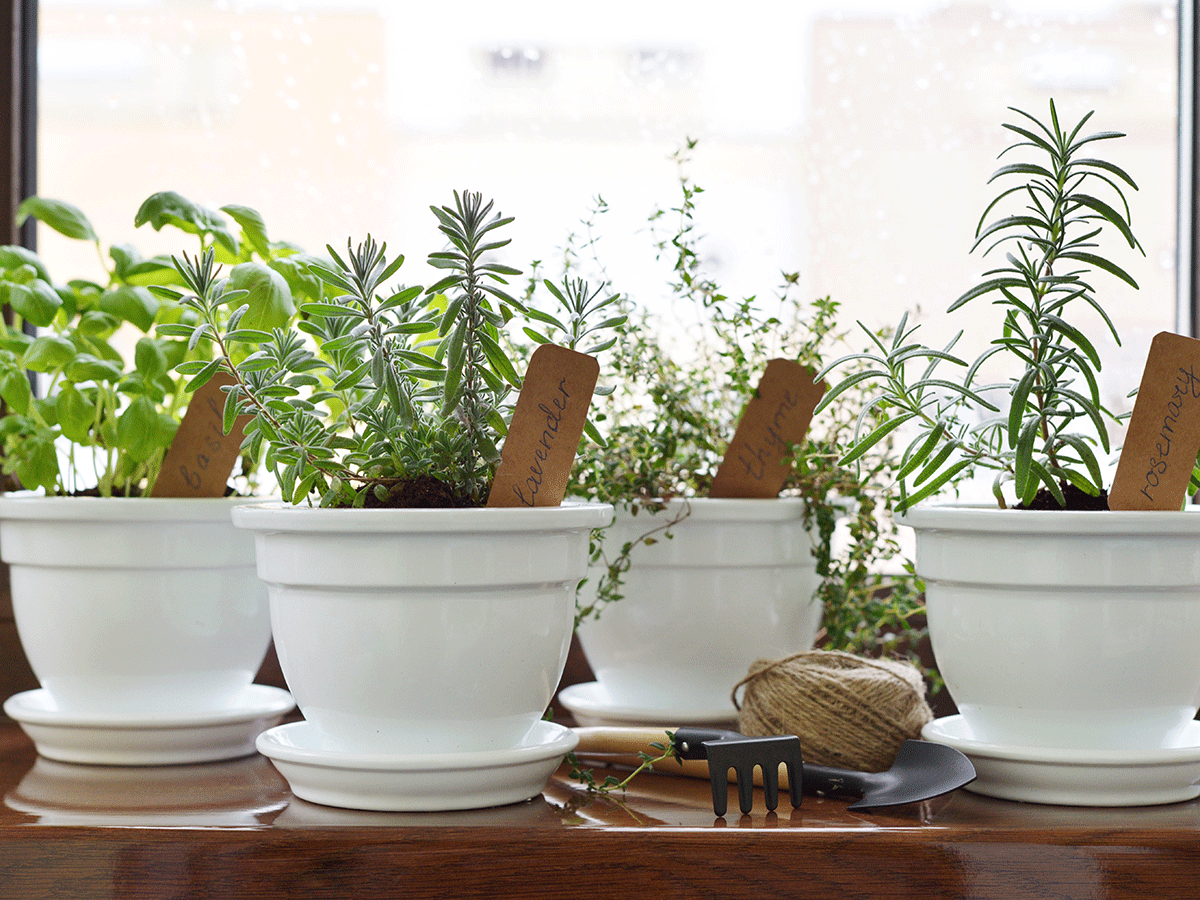
Money savings and waste reduction
In light of the economic effects of Covid-19, many people are now looking critically at their spending habits and cutting back where possible. “The biggest benefit to growing your own herbs and produce is that in the long run, it saves money on groceries,” says Enfield. “Produce is not only expensive, it’s perishable. Many people end up throwing a lot of money and food away when they don’t eat the produce before it goes bad. When fresh produce is readily accessible, you are more likely to eat it, and more of it, and that is good for you and your family’s health.” Plus, if you’re worried about over-eating while working from home, it’ll help to have healthy snacks on-hand.
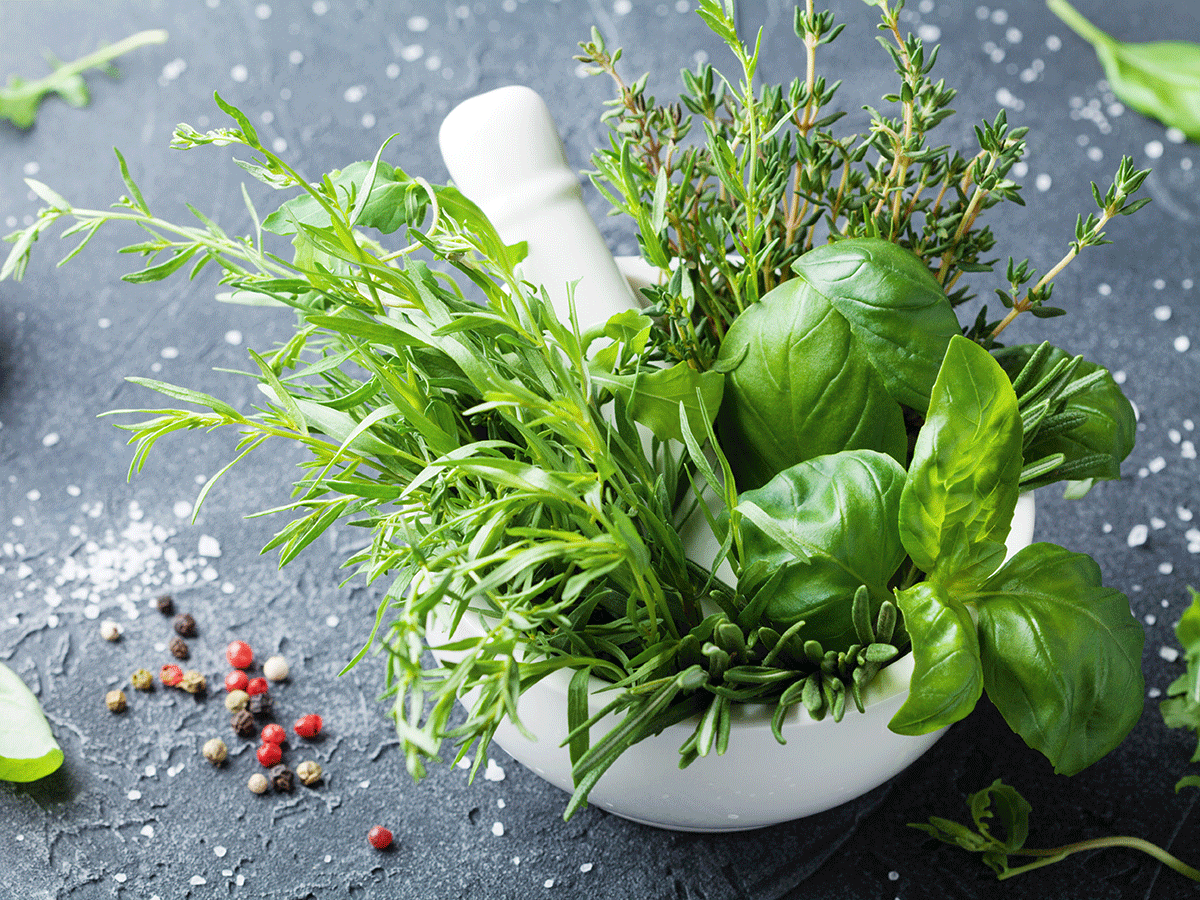
Enhanced taste and nutrition
On top of that, homegrown vegetables and herbs really do taste better—it’s not just because you have a personal attachment to them. “When vegetables are allowed to ripen fully on the plant before being picked, they tend to have more flavor,” explains Enfield. “Homegrown is more nutritious than store-bought produce, which has to be picked before it’s fully ripe.”
Next, learn the frozen foods you should never buy.
